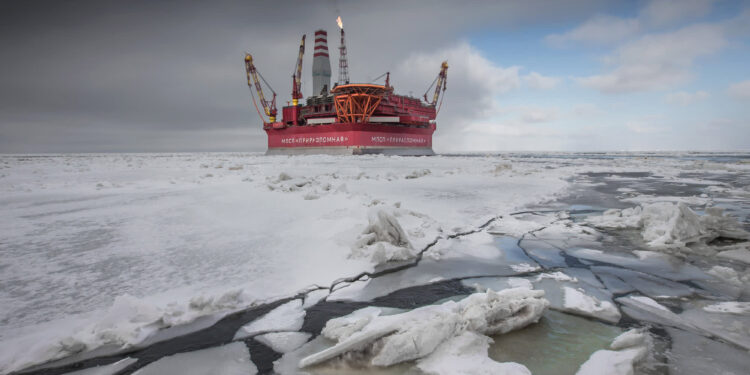Russia Noted An Increase in Oil and Condensate Reserves in The Arctic Zone
No new hydrocarbon deposits were discovered in the Arctic zone in 2023, but the increase in recoverable reserves at existing fields in this region amounted to 13.4 million tons of oil and condensate and 60.6 billion cubic meters of gas, the head of the State Reserves Commission (SRC) Igor Shpurov told RIA Novosti.
“In terms of hydrocarbons, no new deposits were discovered in the Arctic zone. And the increase in reserves in this region in categories АВ1С1 liquid (oil + condensate) amounted to 13.4 million tons, gas – 60.6 billion cubic meters of gas,” he said.
The day before, the State Reserves Committee reported that the increase in oil and condensate reserves in Russia in 2023 amounted to 550 million tons of oil and condensate and 705 million tons of gas. Thus, the Arctic’s share in the increase in liquid hydrocarbon and gas reserves was 2.4% and 8.6%, respectively.
Shpurov noted that in terms of solid minerals in the Arctic, the large Sovinskoye gold deposit, which is located off the coast of the Chukchi Sea, was put on the balance sheet. In addition, the titanium deposit in the Murmansk region – “America”, which is on the balance sheet of the All-Russian Scientific Research Institute of Mineral Raw Materials named after N. M. Fedorovsky (FGBU VIMS) was taken into account.
He also said that the increase in gas reserves at Gazprom’s Malyginskoye field, part of the Tambey group, amounted to 187.9 billion cubic meters in 2023.
“The large oil and gas condensate field named after R.U. Maganov was discovered on the shelf of the Caspian Sea by Lukoil-Nizhnevolzhskneft LLC. The increase in gas reserves amounted to 136 billion cubic meters. There were also large increases… in gas at the Malyginskoye field – 187.9 billion cubic meters of gas (PJSC “ Gazprom),” he said.
The day before, the State Reserves Committee reported that in general, Russian subsoil users put 705 billion cubic meters of gas on their balance sheets at the end of the year. That is, the Malyginskoye field provided almost 27% of the total increase in “blue fuel” reserves in the country.
The Tambey group includes the Tambey and Malyginskoye fields. In terms of the size of gas reserves, they are comparable to the fields of the Bovanenkovo group, which has the main production potential.











